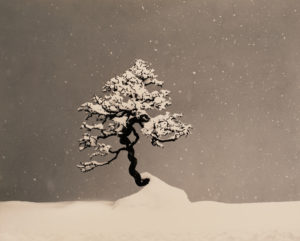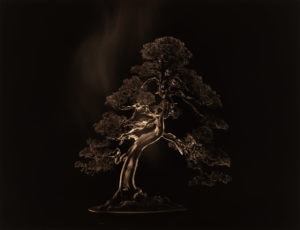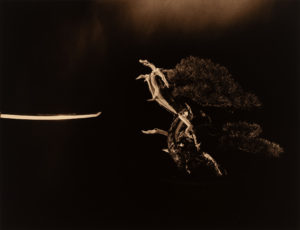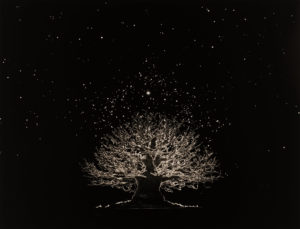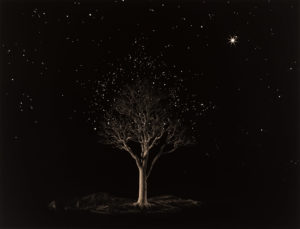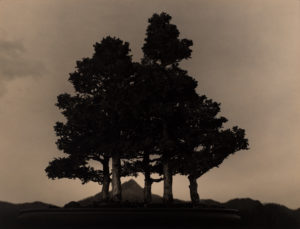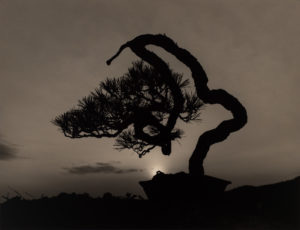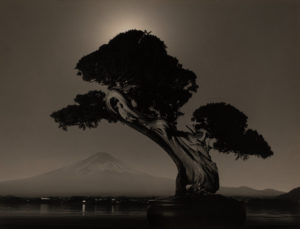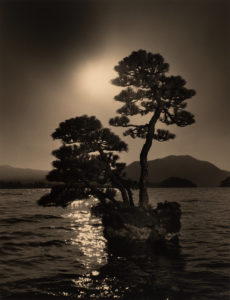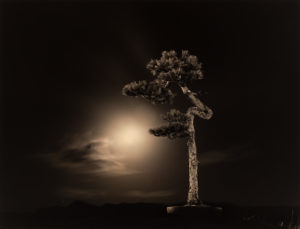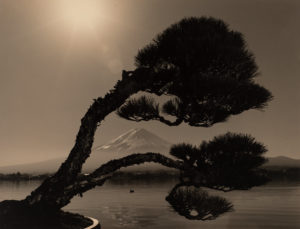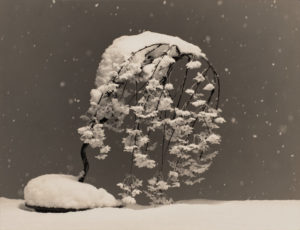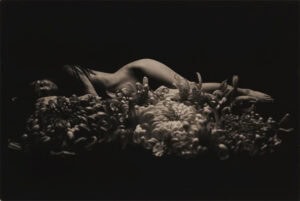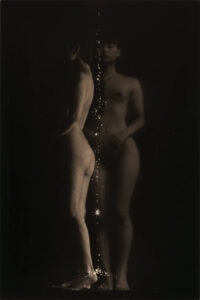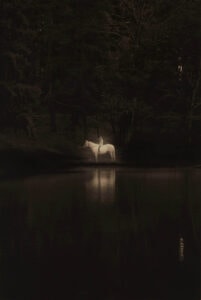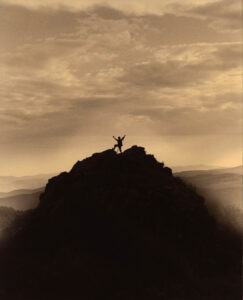Yamamoto Masao
Japanese, born 1957
About
Yamamoto Masao
Japanese, born 1957
Yamamoto Masao is inspired by the Japanese philosophy of Zen, and the belief that meditation and the pursuit of beauty play an essential role in the development of human beings. Yamamoto’s philosophical and spiritual roots contribute to his distinctive photographic style, in which the ordinary is revealed as something extraordinary.
The artist’s series Bonsai focuses on the traditional Japanese art of cultivating miniature ornamental trees or shrubs. Yamamoto Masao has always had an intrinsic interest in bonsai, and the project materialized when he had the opportunity to meet Minoru Akiyama, one of the most highly revered bonsai artists in Japan, with whom he has been collaborating since 2017. Of the work and bonsai, Yamamoto comments “Its life, sustained inside a small pot, with the smallest amount of soil, both embraces tranquility of life and agitation of death. Its existence, so powerful, distinguished, and radiating, makes it worthy of marvel. While a bonsai mimics nature, it is not left untamed in the wild. Bonsai is a creation born out of a playful collaboration between nature and people. It’s purpose can be perceived as one of metaphysical ideology… The world of bonsai is similar to that of the world of haiku and waka, as it is built on minimal elements alone. Furthermore, I’ve always felt that photography and haiku are very similar methods of expression.“
Yamamoto’s small-scale photographs, from his early series A Box of Ku and Nakazora, are visual haikus that can be displayed as a collection of harmonious objects, or stand alone as individual images. The prints are meditative objects, each image a trigger that encourages the viewer to draw on their own memories and subconscious. While the images are simple and observational, their suggestive nature is what gives them power.
In his series, KAWA=FLOW, explores “the world where we are and the world where we go in the future.” The images in this series are a reflection on nature and the relationship between the world and self. Evocative of harmony and contentment, they reflect Yamamoto’s philosophy that humility and respect for the universe occurs when uncovering quietude in oneself, a process attained only through nature.
Yamamoto’s photographs and installations have been exhibited at numerous international institutions, including the Tokyo Metropolitan Museum of Photography; The Museum of Fine Arts, Houston; the Museum of Photographic Arts, San Diego; the High Museum of Art, Atlanta; the George Eastman House, Rochester; the Carrousel du Louvre, Paris; the Galerie de Moderne, Munich; the Centro per l’Arte Contemporanea, Rome; and the Galeria d’Arte Moderna di Bologna. Yamamoto’s photographs are included in the permanent collections of the Victoria & Albert Museum, London; the Philadelphia Museum of Art; the Museum of Fine Arts, Houston; the International Center of Photography, New York; the Museum of Contemporary Photography, Chicago; the Philadelphia Museum of Art; and the Sir Elton John Collection, among others. His monographs include Tori (Radius Books, 2016); Fujsan (Nazraeli Press, 2008); é (Nazraeli Press, 2005); Omizuao (Nazraeli Press, 2003); Nakazora (Nazraeli Press, 2001); and A Box of Ku (Nazraeli Press, 1998).
A Box of Ku / Nakazora
Yamamoto Masao
Nakazora #1213, 1999
Gelatin silver print and mixed media
Approximately 3 1/4 x 4 15/16 in.
$5,000 unframed
Yamamoto Masao
Nakazora #820, 1999
Gelatin silver print
3 7/8 x 5 7/8 in.
$3,000 unframed
Yamamoto Masao
Nakazora #1021, 2001
Gelatin silver print and mixed media
7 3/4 x 3 1/2 in.
$2,000 unframed
Yamamoto Masao
A Box of Ku #291, 1995
Gelatin silver print
4 x 4 5/8 in.
$3,000 unframed
Yamamoto Masao
A Box of Ku #366, 1994
Gelatin silver print
6 7/8 x 4 1/2 in.
$1,500 unframed
Yamamoto Masao
A Box of Ku #43, 1992
Gelatin silver print and mixed media
4 3/8 x 5 7/16 in.
$2,000 unframed
Yamamoto Masao
Nakazora #811, 2001
Gelatin silver print and mixed media
3 15/16 x 2 11/16
$2,000 unframed
Yamamoto Masao
Nakazora #1079, 2003
Gelatin silver print
4 1/2 x 6 5/8 in.
$1,500 unframed
Yamamoto Masao
A Box of Ku #77, 1993
Gelatin silver print and mixed media
Approximately 3 3/8 x 5 1/8 in.
$1,500 unframed
Yamamoto Masao
A Box of Ku #170, 1991
Gelatin silver print and mixed media
4 1/4 x 6 7/16 in.
$1,500 unframed
Yamamoto Masao
A Box of Ku #179, 1995
Gelatin silver print
6 3/8 x 4 1/8 in.
$1,500 unframed
Yamamoto Masao
A Box of Ku #715, 2000
Gelatin silver print and mixed media
7 x 6 3/8 in.
$1,200 unframed
Yamamoto Masao
Nakazora #809, 1999
Gelatin silver print and mixed media
4 1/2 x 6 3/8 in.
$1,500 unframed
Yamamoto Masao
Nakazora #905, 2001
Gelatin silver print and mixed media
Approximately 6 1/2 x 5 in.
$3,000 unframed
Yamamoto Masao
Nakazora #1400, 2006
Gelatin silver print
5 3/4 x 5 3/4 in.
$1,500 unframed
Yamamoto Masao
Nakazora #961, 2002
Gelatin silver print
Approximately 3 3/4 x 5 5/8 in.
$1,200 unframed
Yamamoto Masao
A Box of Ku #264, 1994
Gelatin silver print with mixed media
4 9/16 x 7 in.
$1,500 unframed
Yamamoto Masao
A Box of Ku #764, 2000
Gelatin silver print
5 1/4 x 6 3/16 in.
$2,000 unframed
Yamamoto Masao
Nakazora #981, 2001
Gelatin silver print
6 x 4 3/4 in.
$1,500 unframed
Yamamoto Masao
Nakazora #983, 2004
Gelatin silver print and mixed media
Approximately 4 5/16 x 5 in.
$5,000 unframed
Yamamoto Masao
A Box of Ku #78, 1993
Gelatin silver print with mixed media
4 3/4 x 7 1/8 in.
$1,500 unframed
Yamamoto Masao
Nakazora #1025, 2003
Gelatin silver print
6 x 4 in.
$2,000 unframed
Yamamoto Masao
Nakazora #1062, 2002
Gelatin silver print
Approximately 4 9/16 x 6 3/4 in.
$1,500 unframed
Yamamoto Masao
A Box of Ku #59, 1990
Gelatin silver print and mixed media
3 11/16 x 5 11/16 in.
$1,500 unframed
Yamamoto Masao
Nakazora #1145, 2002
Gelatin silver print and mixed media
3 3/4 x 5 1/4 in.
$3,000 unframed
Yamamoto Masao
Nakazora #1159, 2002
Gelatin silver print and mixed media
Approximately 3 7/16 x 5 1/8 in.
$4,000 unframed
Yamamoto Masao
Nakazora #1174, 2004
Gelatin silver print and mixed media
Approximately 4 15/16 x 5 in.
$3,000 unframed
Yamamoto Masao
A Box of Ku #152, 1993
Gelatin silver print and mixed media
Approximately 4 3/4 x 7 1/8 in.
$1,500 unframed
Yamamoto Masao
Nakazora #1349, 2004
Gelatin silver print and mixed media
4 15/16 x 8 5/8 in.
$1,500 unframed
Yamamoto Masao
Nakazora #1409, 2005
Gelatin silver print
4 1/2 x 6 11/16 in.
$4,000 unframed
Yamamoto Masao
Nakazora #814, 1997
Gelatin silver print and mixed media
6 1/4 x 5 1/8 in.
$1,500 unframed
Yamamoto Masao
Nakazora #1425, 2004
Gelatin silver print
5 1/4 x 8 1/2 in.
$1,500 unframed
Yamamoto Masao
Nakazora #977, 2004
Gelatin silver print and mixed media
3 15/16 x 5 15/16 in.
$1,200 unframed
Yamamoto Masao
A Box of Ku #613, 1993
Gelatin silver print and mixed media
4 1/2 x 6 in.
$5,000 unframed
Yamamoto Masao
A Box of Ku #17, 1990
Gelatin silver print
6 1/2 x 9 1/2 in.
$1,500 unframed
Yamamoto Masao
Nakazora #1082, 2000
Gelatin silver print and mixed media
3 7/8 x 4 5/16 in.
$2,000 unframed
Yamamoto Masao
Nakazora #1160, 2002
Gelatin silver print
5 1/8 x 4 in.
$3,000 unframed
Yamamoto Masao
A Box of Ku #672, 1996
Gelatin silver print and mixed media
3 1/4 x 4 15/16 in.
$1,500 unframed
Yamamoto Masao
Nakazora #1256, 2005
Gelatin silver print and mixed media
5 9/16 x 3 9/16 in.
$2,000 unframed
Yamamoto Masao
Nakazora #853, 1999
Gelatin silver print and mixed media
Approximately 6 x 3 15/16 in.
$3,000 unframed
Yamamoto Masao
Nakazora #1073, 2001
Gelatin silver print and mixed media
3 1/4 x 4 7/8 in.
$1,200 unframed
Yamamoto Masao
Nakazora #1316, 2004
Gelatin silver print and mixed media
Approximately 4 1/16 x 6 1/16 in.
$1,200 unframed
Yamamoto Masao
Nakazora #805, 2001
Gelatin silver print and mixed media
4 5/16 x 6 1/2 in.
$1,200 unframed
Yamamoto Masao
A Box of Ku #741, 1997
Gelatin silver print
4 x 6 1/16 in.
$3,000 unframed
Yamamoto Masao
Nakazora #1254, 2005
Gelatin silver print
8 x 5 in.
$3,000 unframed
Yamamoto Masao
A Box of Ku #387, 1997
Gelatin silver print
7 1/8 x 3 3/8 in.
$2,000 unframed
Yamamoto Masao
Nakazora #815, 1997
Pigment ink print
3 7/8 x 3 7/8 in.
$3,000 unframed
Yamamoto Masao
Nakazora #1144, 2002
Gelatin silver print with mixed media
4 7/8 x 6 3/8 in.
$2,000 unframed
Yamamoto Masao
A Box of Ku / Nakazora
-
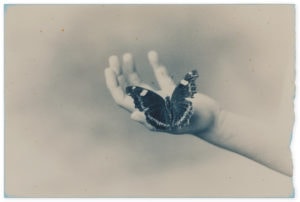
Nakazora #1213
-
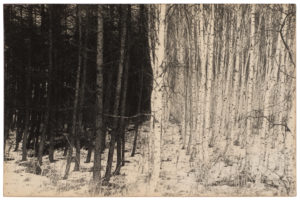
Nakazora #820
-
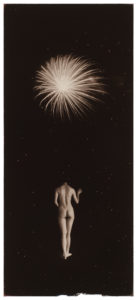
Nakazora #1021
-
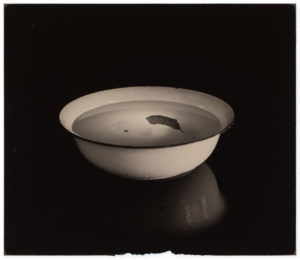
A Box of Ku #291
-
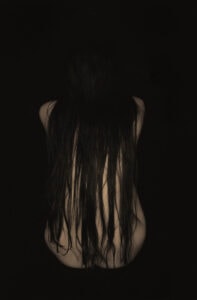
A Box of Ku #366
-

A Box of Ku #43
-
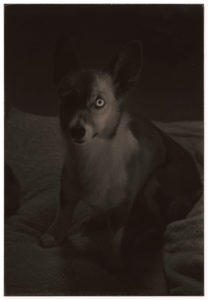
Nakazora #811
-
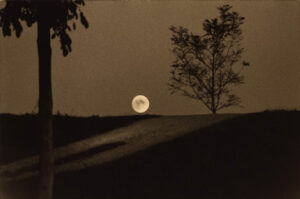
Nakazora #1079
-
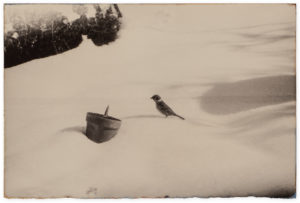
A Box of Ku #77
-
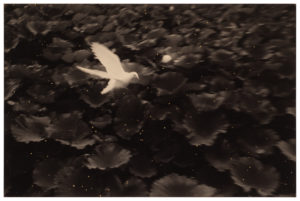
A Box of Ku #170
-
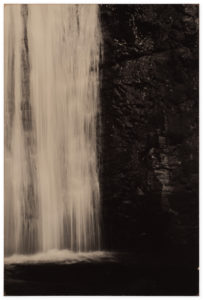
A Box of Ku #179
-
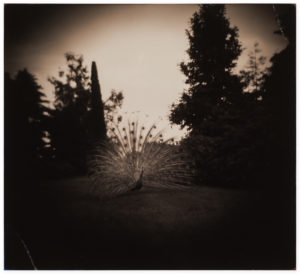
A Box of Ku #715
-
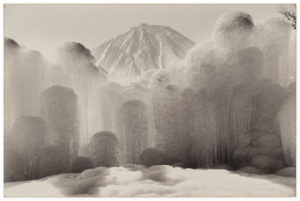
Nakazora #809
-
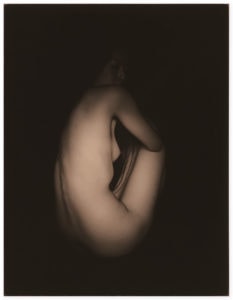
Nakazora #905
-

Nakazora #1400
-
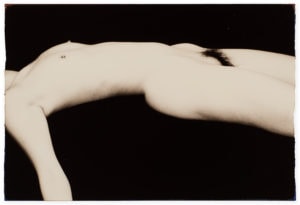
Nakazora #961
-

A Box of Ku #264
-
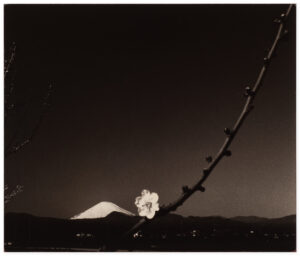
A Box of Ku #764
-
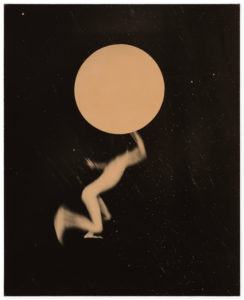
Nakazora #981
-
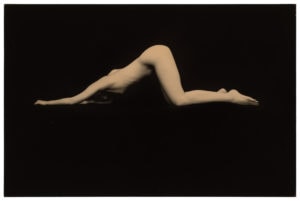
Nakazora #983
-
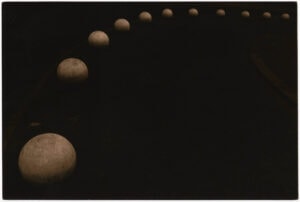
A Box of Ku #78
-
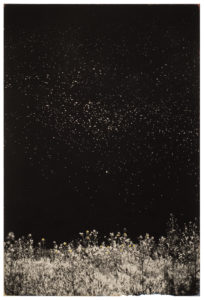
Nakazora #1025
-
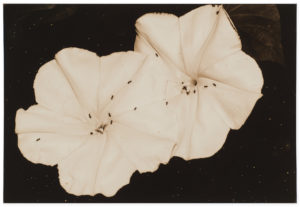
Nakazora #1062
-
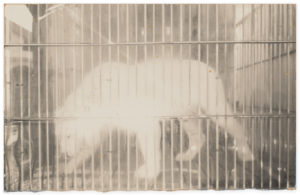
A Box of Ku #59
-
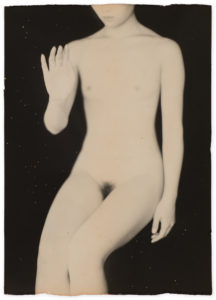
Nakazora #1145
-
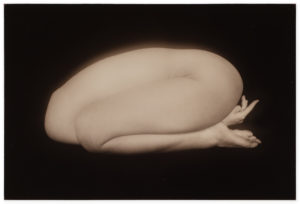
Nakazora #1159
-
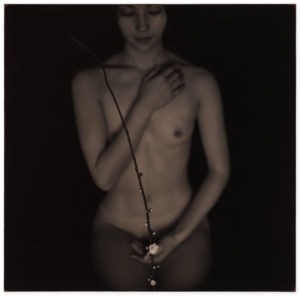
Nakazora #1174
-
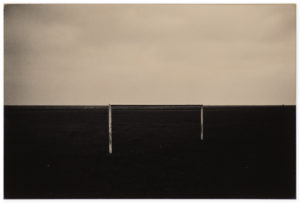
A Box of Ku #152
-
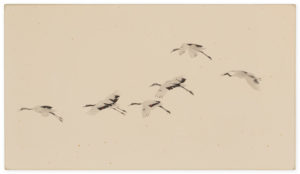
Nakazora #1349
-
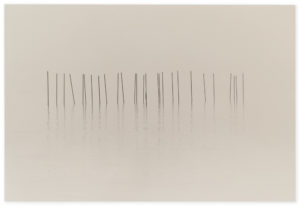
Nakazora #1409
-
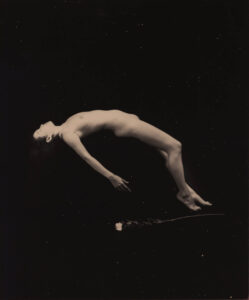
Nakazora #814
-
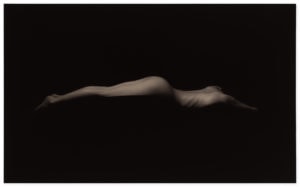
Nakazora #1425
-
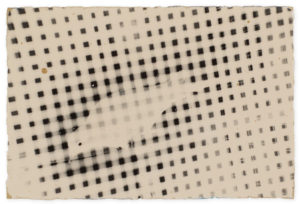
Nakazora #977
-
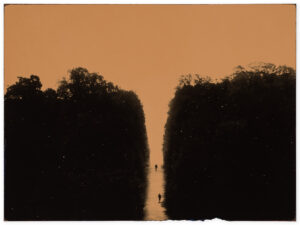
A Box of Ku #613
-
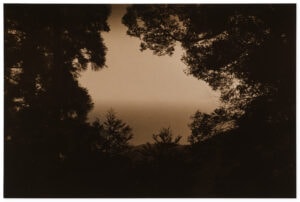
A Box of Ku #17
-
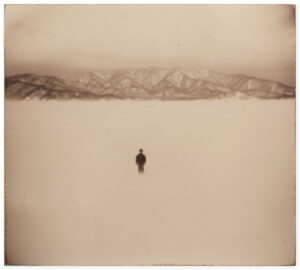
Nakazora #1082
-
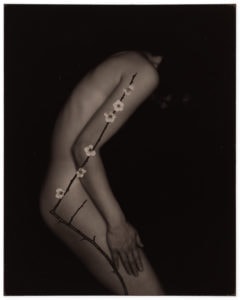
Nakazora #1160
-
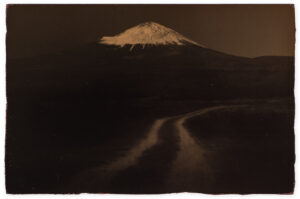
A Box of Ku #672
-
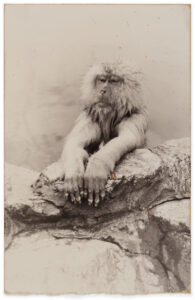
Nakazora #1256
-
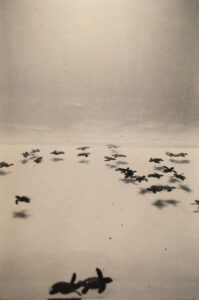
Nakazora #853
-
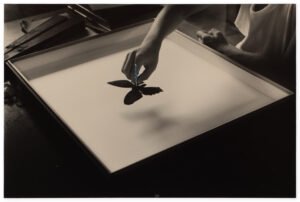
Nakazora #1073
-
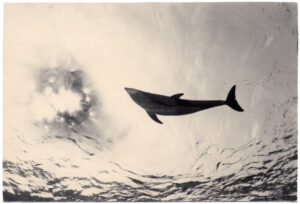
Nakazora #1316
-

Nakazora #805
-
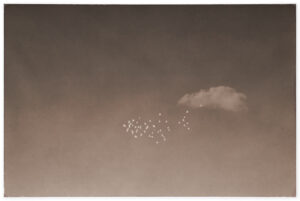
A Box of Ku #741
-
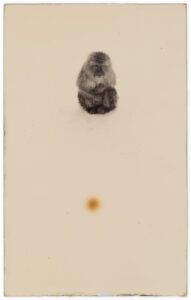
Nakazora #1254
-
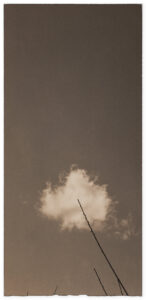
A Box of Ku #387
-
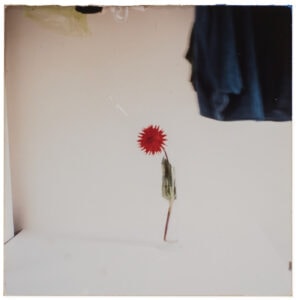
Nakazora #815
-

Nakazora #1144
Kawa = Flow
Yamamoto Masao
Kawa=Flow #1714, 2023
Gelatin silver print
Approximately 9 5/16 x 6 1/8 in.
$2,500 unframed
Yamamoto Masao
Kawa=Flow #1654, 2016
Gelatin silver print and mixed media
Approximately 7 15/16 x 6 1/8 in.
$4,500 unframed
Yamamoto Masao
Kawa=Flow #1632, 2015
Gelatin silver print
7 3/8 x 9 1/16 in.
$4,500 unframed
Yamamoto Masao
Kawa=Flow #1616, 2012
Gelatin silver print
9 1/2 x 6 5/8 in.
$5,500 unframed
Yamamoto Masao
Kawa Flow #1689, 2020
Gelatin Silver Print
10 x 9 3/4 in.
$3,500 unframed
Yamamoto Masao
Kawa=Flow #1589, 2010
Gelatin silver print
10 1/4 x 7 5/8 in.
$3,500 unframed
Yamamoto Masao
Kawa=Flow #1635, 2015
Gelatin silver print with mixed media
6 1/4 x 9 3/8 in.
$3,500 unframed
Yamamoto Masao
Kawa=Flow #1590, 2010
Gelatin silver print
Approximately 9 5/8 x 6 5/16 in.
$5,500 unframed
Yamamoto Masao
Kawa=Flow #1601, 2010
Gelatin silver print and mixed media
11 5/16 x 4 11/16 in.
$4,500 unframed
Yamamoto Masao
Kawa=Flow #1639, 2015
Gelatin silver print
9 1/4 x 7 1/8 in.
$3,500 unframed
Yamamoto Masao
Kawa=Flow #1614, 2012
Gelatin silver print
Approximately 6 1/4 x 9 3/8 in.
$5,500 unframed
Yamamoto Masao
Kawa=Flow #1715, 2024
Gelatin silver print and mixed media
6 3/8 x 9 7/16 in.
$2,000 unframed
Yamamoto Masao
Kawa=Flow #1685, 2017
Gelatin silver print and mixed media
13 3/16 x 9 1/16 in.
$4,500 unframed
Yamamoto Masao
Kawa=Flow #1658, 2016
Gelatin silver print and mixed media
7 7/16 x 9 1/16 in.
$8,000 unframed
Yamamoto Masao
Kawa=Flow #1653, 2016
Gelatin silver print
9 1/2 x 6 3/8 in.
$2,500 unframed
Yamamoto Masao
Kawa=Flow #1681, 2016
Gelatin silver print
6 3/16 x 9 7/16 in.
$3,500 unframed
Yamamoto Masao
Kawa=Flow #1657, 2016
Gelatin silver print and mixed media
10 5/8 X 4 5/16 in.
$3,500 unframed
Yamamoto Masao
Kawa=Flow #1581, 2009
Gelatin silver print
6 5/16 in. x 8 7/16 in.
$3,500 unframed
Yamamoto Masao
Kawa = Flow #1629, Year
Medium
Dimensions
Yamamoto Masao
Kawa=Flow #1618, 2012
Gelatin silver print
Approximately 6 5/16 x 9 3/8 in.
$6,500 unframed
Yamamoto Masao
Kawa=Flow #1631, 2015
Gelatin silver print
9 5/16 x 6 3/8 in.
$2,500 unframed
Yamamoto Masao
Kawa=Flow #1646, 2024
Gelatin silver print and mixed media
6 1/4 x 10 1/16 in.
$2,500 unframed
Yamamoto Masao
Kawa=Flow #1642, 2015
Gelatin silver print and mixed media
13 5/16 x 10 1/4 in.
$8,000 unframed
Yamamoto Masao
Kawa=Flow #1664, 2016
Gelatin silver print and mixed media
Approximately 5 1/4 x 8 1/16 in.
$5,500 unframed
Yamamoto Masao
Kawa=Flow #1656, 2016
Gelatin silver print and mixed media
7 3/8 x 9 1/16 in.
$3,500 unframed
Yamamoto Masao
Kawa=Flow #1661, 2016
Gelatin silver print and mixed media
9 7/8 x 10 5/16 in.
$6,500 unframed
Yamamoto Masao
Kawa=Flow #1675, 2016
Gelatin silver print and mixed media
7 3/8 x 9 3/8 in.
$2,500 unframed
Yamamoto Masao
Kawa=Flow #1659, 2016
Gelatin silver print and mixed media
5 15/16 x 9 7/16 in.
$2,500 unframed
Yamamoto Masao
Kawa=Flow #1651, 2016
Gelatin silver print and mixed media
8 1/8 X 4 3/8 in.
$4,500 unframed
Yamamoto Masao
Kawa=Flow #1530, 2008
Gelatin silver print
6 3/8 x 9 9/16 in.
$3,500 unframed
Yamamoto Masao
Kawa=Flow #1543, 2008
Gelatin silver print
Approximately 5 13/16 x 9 11/16 in.
$8,000 unframed
Yamamoto Masao
Kawa=Flow #1652, 2016
Gelatin silver print and mixed media
9 1/2 x 6 5/16 in.
$4,500 unframed
Yamamoto Masao
Kawa=Flow #1500, 2008
Gelatin silver print
4 1/4 x 6 5/16 in.
$3,500 unframed
Yamamoto Masao
Kawa=Flow #1501, 2008
Gelatin silver print
5 5/16 x 8 1/8 in.
$3,500 unframed
Yamamoto Masao
Kawa=Flow #1516, 2007
Gelatin silver print
8 x 5 1/8 in.
$2,000 unframed
Yamamoto Masao
Kawa=Flow #1528, 2008
Gelatin silver print
7 3/8 x 4 15/16 in.
$2,500 unframed
Yamamoto Masao
Kawa=Flow #1553, 2008
Gelatin silver print
5 15/16 x 8 15/16 in.
$3,500 unframed
Yamamoto Masao
Kawa=Flow #1662, 2016
Gelatin silver print and mixed media
9 7/16 x 6 5/16 in.
$4,500 unframed
Yamamoto Masao
Kawa=Flow #1576, 2009
Gelatin silver print
5 9/16 x 11 1/2 in.
$4,500 unframed
Yamamoto Masao
Kawa=Flow #1531, 2009
Gelatin silver print
5 7/8 x 7 7/8 in.
$4,500 unframed
Yamamoto Masao
Kawa=Flow #1562, 2008
Gelatin silver print
5 5/8 x 8 3/4 in.
$5,500 unframed
Yamamoto Masao
Kawa=Flow #1541, 2008
Gelatin silver print
5 7/8 x 9 1/8 in.
$2,500 unframed
Yamamoto Masao
Kawa = Flow
-
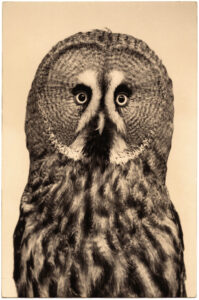
Kawa=Flow #1714
-
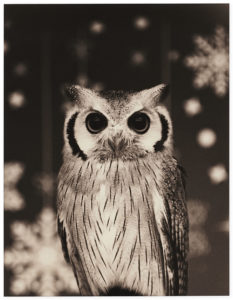
Kawa=Flow #1654
-
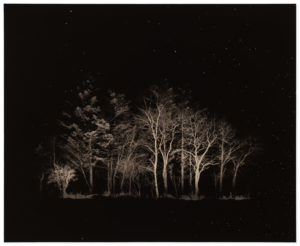
Kawa=Flow #1632
-
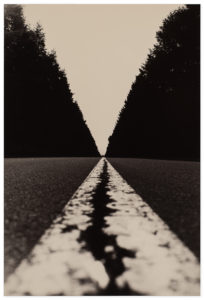
Kawa=Flow #1616
-
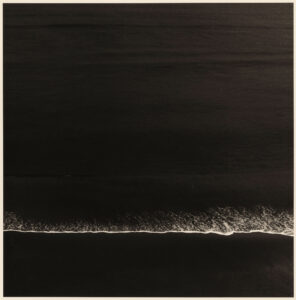
Kawa Flow #1689
-
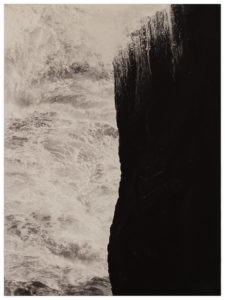
Kawa=Flow #1589
-
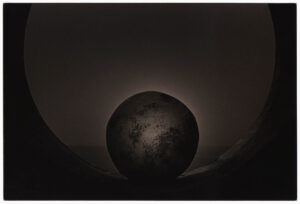
Kawa=Flow #1635
-
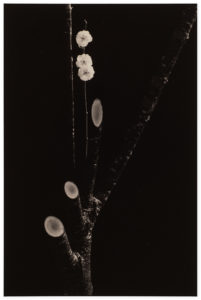
Kawa=Flow #1590
-
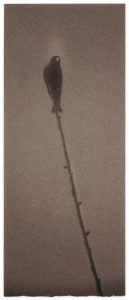
Kawa=Flow #1601
-
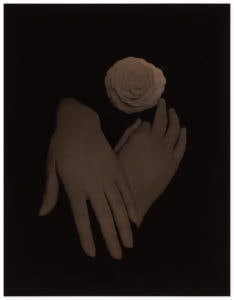
Kawa=Flow #1639
-

Kawa=Flow #1614
-

Kawa=Flow #1715
-

Kawa=Flow #1685
-
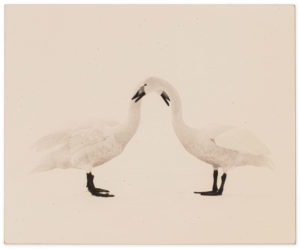
Kawa=Flow #1658
-

Kawa=Flow #1653
-
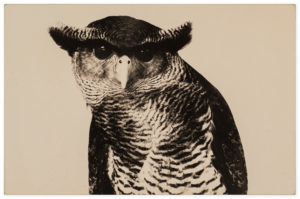
Kawa=Flow #1681
-

Kawa=Flow #1657
-
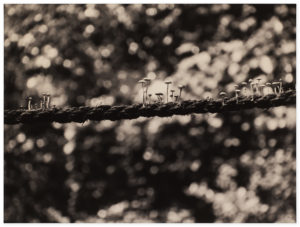
Kawa=Flow #1581
-
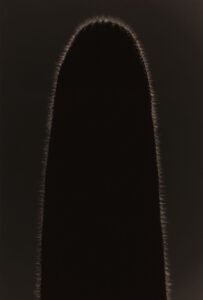
Kawa = Flow #1629
-
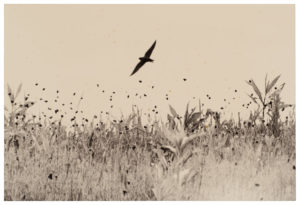
Kawa=Flow #1618
-
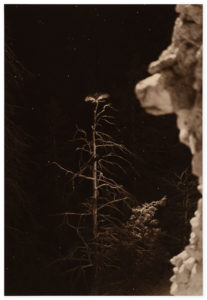
Kawa=Flow #1631
-
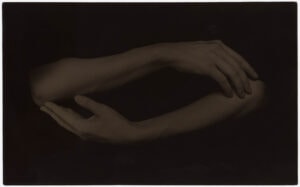
Kawa=Flow #1646
-
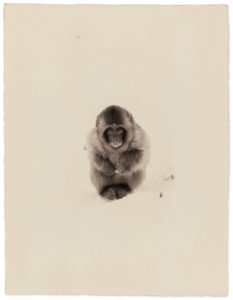
Kawa=Flow #1642
-

Kawa=Flow #1664
-
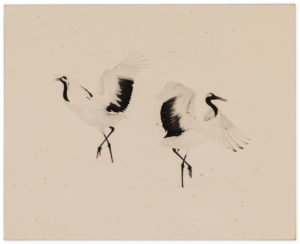
Kawa=Flow #1656
-

Kawa=Flow #1661
-
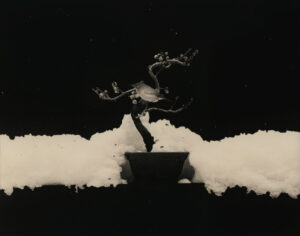
Kawa=Flow #1675
-

Kawa=Flow #1659
-
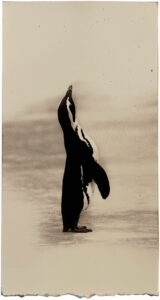
Kawa=Flow #1651
-
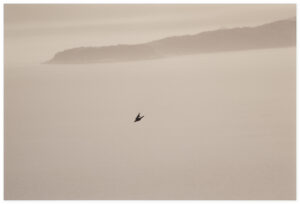
Kawa=Flow #1530
-
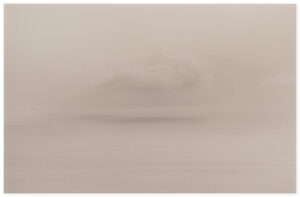
Kawa=Flow #1543
-
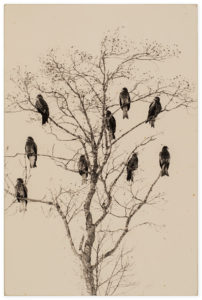
Kawa=Flow #1652
-
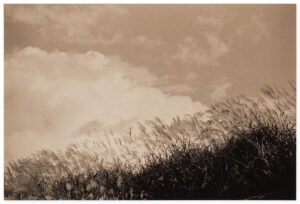
Kawa=Flow #1500
-
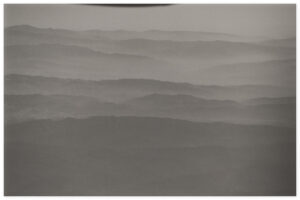
Kawa=Flow #1501
-

Kawa=Flow #1516
-

Kawa=Flow #1528
-
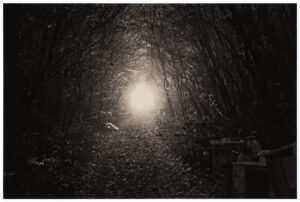
Kawa=Flow #1553
-
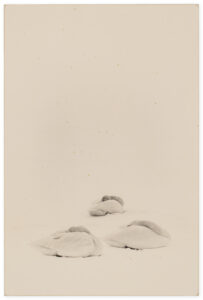
Kawa=Flow #1662
-
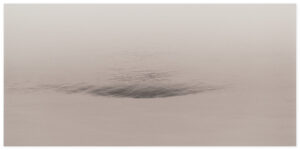
Kawa=Flow #1576
-
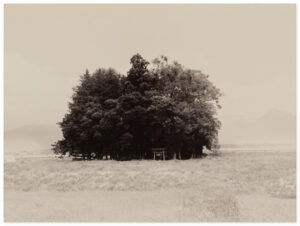
Kawa=Flow #1531
-

Kawa=Flow #1562
-
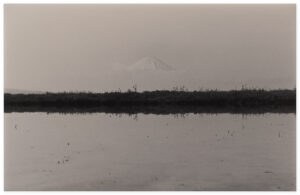
Kawa=Flow #1541
Bonsai
Yamamoto Masao
Bonsai #4012, 2018
Gelatin silver print / Pigment ink print
11 x 14 in. / 16 x 20 in.
$6,000 - $20,000 unframed
Yamamoto Masao
Bonsai #4000, 2018
Gelatin silver print / Pigment ink print
11 x 14 in. / 16 x 20 in.
$4,000 - $5,000 unframed
Yamamoto Masao
Bonsai #4001, 2018
Gelatin silver print / Pigment ink print
11 x 14 in. / 16 x 20 in.
$6,000 - $20,000 unframed
Yamamoto Masao
Bonsai #4003, 2018
Gelatin silver print / Pigment ink print
11 x 14 in. / 16 x 20 in.
$5,000 - $7,000 unframed
Yamamoto Masao
Bonsai #4004, 2018
Gelatin silver print
10 1/16 x 13 1/16 in.
$3,000 unframed
Yamamoto Masao
Bonsai #4006, 2018
Gelatin silver print / Pigment ink print
11 x 14 in. / 16 x 20 in.
$4,000 - $5,000 unframed
Yamamoto Masao
Bonsai #4009, 2018
Gelatin silver print / Pigment ink print
11 x 14 in. / 16 x 20 in.
$6,000 - $8,000 unframed
Yamamoto Masao
Bonsai #4013, 2018
Gelatin silver print / Pigment ink print
11 x 14 in. / 16 x 20 in.
$4,000 - $8,000 unframed
Yamamoto Masao
Bonsai #4014, 2018
Gelatin silver print
10 1/16 x 13 1/8 in.
$5,000 unframed
Yamamoto Masao
Bonsai #4015, 2018
Gelatin silver print
13 5/16 x 10 3/16 in.
$3,000 unframed
Yamamoto Masao
Bonsai #4016, 2018
Gelatin silver print
13 1/4 x 10 1/8 in.
$5,000 unframed
Yamamoto Masao
Bonsai #4018, 2018
Gelatin silver print / Pigment ink print
11 x 14 in. / 16 x 20 in.
$5,000 - $7,000 unframed
Yamamoto Masao
Bonsai #4021, 2019
Gelatin silver print
13 5/32 x 10 1/8 in.
$8,000 unframed
Yamamoto Masao
Bonsai #4022, 2019
Gelatin silver print
10 3 /32 x 13 1/4 in.
$5,000 unframed
Yamamoto Masao
Bonsai #4023, 2019
Gelatin silver print
13 1/4 x 10 1/8 in.
$8,000 unframed
Yamamoto Masao
Bonsai #4024, 2019
Gelatin silver print
10 1/8 x 13 1/4 in.
$5,000 unframed
Yamamoto Masao
Bonsai #4026, 2019
Gelatin silver print
10 3/16 x 13 5/16 in.
$8,000 unframed
Tomoso
Yamamoto Masao
Tomosu #6000, 2023
Gelatin silver print
8 x 6 5/16 in.
$3,000 unframed
Yamamoto Masao
Tomosu #6003, 2023
Gelatin silver print with mixed media
8 7/8 x 6 5/16 in.
$3,000 unframed
Yamamoto Masao
Tomosu #6010, 2023
Gelatin silver print
Approximately 6 5/16 x 8 7/8 in.
$3,000 unframed
Yamamoto Masao
Tomosu #6011, 2023
Gelatin silver print
Approximately 8 7/8 x 6 5/16 in.
$3,000 unframed
La vie simple
Yamamoto Masao
La vie simple #5026, 2021
Gelatin silver print
10 1/2 x 7 1/8 in.
$2,000 unframed
Yamamoto Masao
La vie simple #5028, 2021
Gelatin silver print
9 1/8 x 7 3/8 in.
$2,000 unframed
